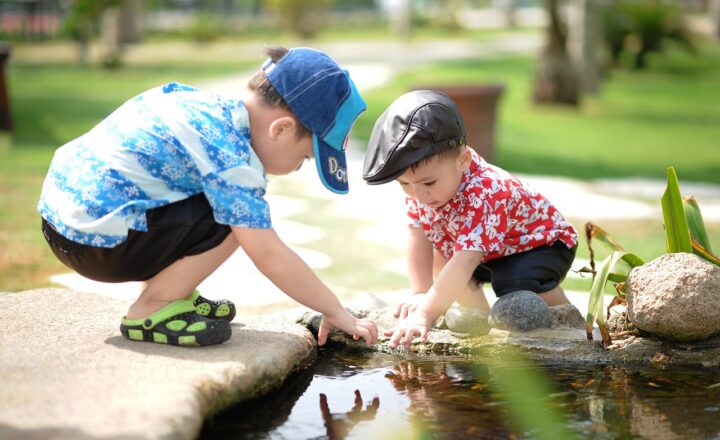Why Physical Activity is Essential for Kids: Creative Ways to Keep Them Active
November 2, 2024

Physical activity plays a vital role in the healthy development of children, affecting everything from physical fitness to mental well-being. In an age where screens often dominate kids’ attention, finding fun, engaging ways to encourage activity is more important than ever. This article delves into the benefits of physical activity for kids and offers creative solutions for keeping them active and energized.
1. The Health Benefits of Physical Activity for Kids
Physical activity isn’t just important for building strong muscles and bones. It has far-reaching effects on children’s health, including improvements in cardiovascular fitness, immune function, and mental health. Active kids are also less likely to experience issues like obesity, diabetes, and anxiety as they grow older.
- Improved Cardiovascular Health: Regular activity strengthens the heart and improves circulation, which reduces the risk of heart disease later in life.
- Enhanced Immune System: Physical activity boosts immunity, helping kids fight off common illnesses more effectively.
- Better Mental Health: Exercise triggers the release of endorphins, which can help combat anxiety and improve overall mood.
2. Why Movement Matters: Cognitive and Academic Benefits
Research shows that physical activity is also linked to cognitive development. Active children often perform better in school, showing improvements in memory, attention, and even test scores. When kids move, they stimulate brain function, which in turn enhances their ability to focus and retain information.
Key Cognitive Benefits:
- Enhanced concentration and memory.
- Improved problem-solving skills.
- Increased ability to handle stress and frustration.
3. Social Skills and Teamwork: Learning Through Play
Many forms of physical activity, such as team sports or group games, also teach kids valuable social skills. When children engage in activities with others, they learn to communicate, collaborate, and resolve conflicts—essential skills for navigating social situations throughout life.
- Communication: Team games encourage kids to communicate their ideas and work together toward a common goal.
- Respect for Others: Playing with others fosters respect for teammates and opponents alike.
- Leadership Skills: Physical activities give kids opportunities to step into leadership roles, guiding others and making decisions.
4. Creative Ideas to Keep Kids Active
Sometimes, getting kids moving requires a little creativity. Here are some fun, engaging ways to encourage physical activity that feel more like play than exercise:
- Scavenger Hunts: Set up a scavenger hunt in the backyard or park where kids need to run around to find hidden treasures. This is an excellent way to keep them moving while also sparking their curiosity.
- Obstacle Courses: Create a simple obstacle course using household items or playground equipment. Kids can jump, crawl, and climb their way through, building strength and coordination along the way.
- Dance Parties: Turn on some music and have a dance party at home. Dancing is a fantastic cardio workout and a lot of fun for kids.
- Nature Walks: Take kids on nature trails where they can explore, climb over rocks, and get a healthy dose of fresh air.
5. Family Activities That Promote Fitness
Physical activity is more enjoyable when it’s a family affair. Participating in active games or exercises together not only promotes fitness but also strengthens family bonds. Here are some family-friendly activities to try:
- Family Bike Rides: Plan a bike ride to a local park or around the neighborhood. It’s a great way to spend time together while keeping everyone active.
- Weekend Sports: Try setting aside one day each weekend for a family sport, whether it’s soccer, basketball, or a game of catch.
- Evening Walks: A simple walk after dinner can be a calming and beneficial routine that helps everyone unwind and get some gentle exercise.
6. Reducing Screen Time and Encouraging Outdoor Play
One of the biggest barriers to physical activity today is screen time. Encouraging kids to put down their devices and spend more time outdoors can significantly improve their physical health and mental well-being.
Tips for Reducing Screen Time:
- Set screen-free times, such as during meals or before bedtime.
- Create a designated playtime outside every day.
- Encourage active alternatives, like playing tag or riding bikes, instead of sedentary activities.
7. The Role of Schools and Communities in Promoting Physical Activity
Schools and communities can play a pivotal role in encouraging children to be active. Schools that prioritize physical education and after-school sports provide structured opportunities for kids to move. Community centers and local sports clubs also offer safe environments for children to stay active, socialize, and learn new skills.
Conclusion
Physical activity is essential for kids’ health, cognitive development, and social skills. By finding creative ways to encourage movement, we can help kids lead healthier, happier lives. Whether through games, family activities, or school programs, every bit of movement counts and sets the stage for a lifelong love of physical activity.
Encourage your kids to explore the outdoors, join in active play, and experience the joy that comes from moving their bodies. Together, we can help the next generation grow up with healthy, active habits.








